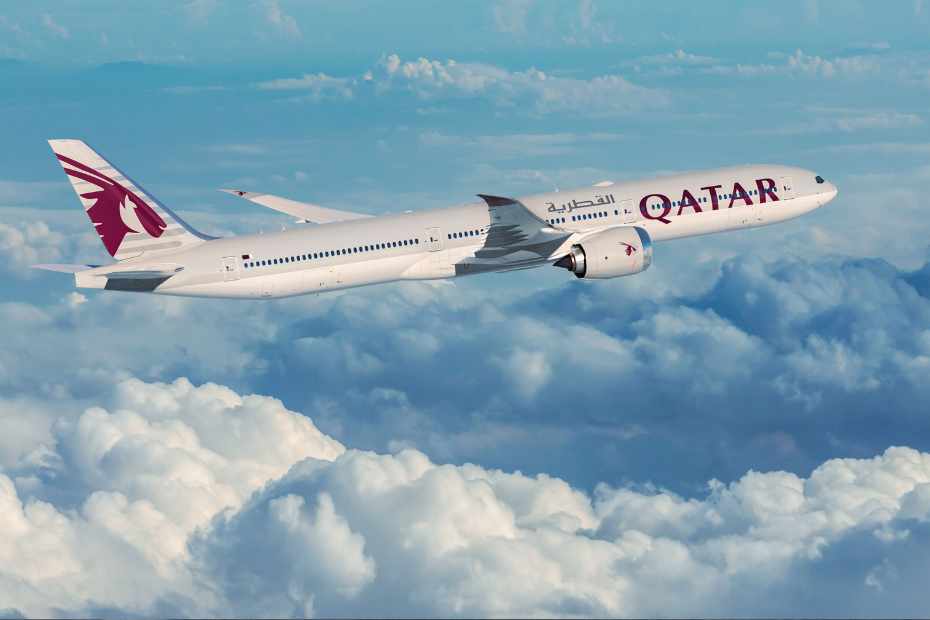Travel: Here’s how you can have a ball on a Baltic cruise

If one of the joys of a cruise vacation is going to many places and only unpacking once, then a Baltic cruise is pure bliss. Imagine visiting 10 countries in as many days, all from the same hotel that doubles as a floating resort. That’s an easy visual to conjure up, funds and free time providing, as jam-packed journeys are standard for a cruise destination that is anything but standard.
How different is the Baltic compared to other cruise regions? For one thing, its season runs from April to September, not year-round like the Caribbean, Mediterranean and Mexican Riviera. Also, an itinerary set in the Baltic Sea emphasizes city life over wildlife. Nature takes a backseat to culture, history, language and the arts. If you want to see Northern Europe’s flora and fauna, book a voyage to the Norwegian fjords instead. And as for wildlife of a human kind, there’s not much of that, either. It’s a Baltic cruise, not a booze cruise.
But if your idea of wild is docking on a picturesque island to enjoy a day exploring a medieval village graced by the cutest-ever restaurant with a menu that’s only in Swedish — oh, and lovingly nestled between the ruins of two 13th-century churches —then by all means go stone-cold crazy on a Baltic cruise.
Thirty-six ships representing 20 English-speaking cruise lines can take you there over six magical months next year. Not all 2025 itineraries include a stop in Visby, the well-preserved Hanseatic town and UNESCO World Heritage Site referred to above, but this is the Baltic we’re talking about — the place oozes enchantment.
Duration-wise, next year’s offerings range from four six-day sails from Oslo to Stockholm aboard MSC Cruise’s 3,223-passenger Poesia (msccruises.com) to an 83-day roundtripper out of New York on Silversea’s 392-capacity Silver Shadow (silversea.com), debarking on June 11.
Eleven nights is considered the sweet spot in the Baltic, making the sweetest sail in 2025 a Windstar Cruise (windstarcruises.com) for its loaded itinerary. With no sea days and a couple of overnighters between June 29 and July 10, the all-suite, 312-passenger Star Legend will visit at least one port in Sweden, Finland, Estonia, Latvia, Lithuania, Poland, Germany and Denmark. That’s eight of the nine countries bounding the Baltic. The outlier is Russia, which hasn’t welcomed a major cruise line since the attack on Ukraine in February 2022.
The loss of culture-rich St. Petersburg on Baltic itineraries is an economic gain for Latvia’s Riga, Lithuania’s Klaipeda and other ports that were considered secondary stops before the invasion. Albeit bittersweet, veteran Baltic cruisers may appreciate taking the cobbled roads less traveled.
Exploring world capitals

With cruises strictly sailing in the Baltic Sea, Copenhagen and Stockholm are where the majority begin and end. A third world capital, Helsinki, is often nestled on the front or back end of the itinerary, while Estonia’s chief city of Tallinn usually fits somewhere near the halfway point of voyages of nine days or longer.
Worthy of a pre- or post-cruise overnight stay at minimum, Stockholm is the Swedish meatball of tourist meccas. Appetizing and authentic as a destination, hearty in its array of attractions, the city is full of flavor as well with a diverse population of nearly a million people spread across seven distinct districts. A hotel in the Slussenomradet neighborhood is a wise choice for its central location and metro station that serves as a hub of public transport for Stockholm (visitstockholm.com).
Slussen is also mere steps from trendy Sodermalm and Gamla Stan (Old Town), home of the must-see Royal Palace and Nobel Prize Museum, where a handwritten manuscript signed by Albert Einstein in 1922 is among the mind-blowing artifacts on display. Stromma runs a fleet of boats and busses that offer hour-long tours with English narration. If you’ve got the time, take the ferry to the island of Djurgarden. A museum dedicated to the most famous pop band ever to come out of Sweden is there — do we really have to say it’s ABBA? — along with the adrenaline-pumping Grona Lund amusement park and the less thrilling Royal National City Park.
Copenhagen (visitcopenhagen.com) is just as “wonderful” as the hit song from the 1952 film, “Hans Christian Andersen,” says. Bursting with unique history, architecture, food and scenery, Denmark’s capital deserves much more time than a cruise often provides. And as sure as Thumbelina is tiny, does this town love its native-son author. HCA’s influence is evident throughout the city, from the iconic harborside Little Mermaid statue, a head-scratching must-see if there ever was one, to his classic fairytales depicted on the “The Flying Trunk” ride at Tivoli Gardens (tivoli.dk), which, opened in 1843, is the third-oldest operating amusement park in the world. If Tivoli’s 114-year-old rollercoaster is too fast and furious for you, a touristy, but worthwhile boat ride through Nyhavn’s narrow and exciting canals will be more your speed. Central to all this is the stately Phoenix Copenhagen, and being the official hotel in town for several cruise lines, Windstar included, it’s a snap to be dropped off there with your luggage after an enjoyable three-hour post-cruise tour.

The bustling city harbor of Helsinki has impressive architecture, a colorful open-air market, a couple of stunning churches, some world-class museums and history that goes back thousands of years. What it lacks is a bona fide must-see. If only there was a place that’s different and easy to get to. Cue Suomenlinna Island. Built during the Swedish era as a maritime fortress and naval base, this wonderful place appeals to lovers of culture and nature, and gives cruisers a chance to breathe, especially if there hasn’t been a sea day yet. Accessible only by ferry, the island attracts more locals than tourists, which world travelers know is a plus. Quaint museums, a supermarket and a scattering of cafes add to the experience, as does the magnificent views of Helsinki (visitfinland.com) at the beginning and end of each 15-minute leg.

Estonia’s capital city of Tallinn (visittallinn.ee/eng) has one of the best-preserved medieval town centers in Europe. So vibrant and chockablock with shops, restaurants and historical buildings, it’s not unusual for cruise passengers to spend their entire port time within this UNESCO World Heritage Site.
Discovering charming ports

Turku is Finland’s No. 1 summer destination, but registers barely a blip as an international cruise port. And foreign passengers are the lesser for it. Finland’s oldest city — its founding dates back to 1229 — is a natural stop between Stockholm and Helsinki, but the former capital city doesn’t get the love it deserves. Windstar, Crystal and Regent Seven Seas have Turku (en.visitturku.fi) on the schedule this year and next, but a reason there aren’t more stems from the costly requirement of having pilots assist ships through the world’s largest archipelago. As local leaders work on a solution, this hamlet along the banks of the Aura River is winning visitors over with its medieval castle and cathedral (both still in use), a 157-year-old market hall (canned bear meat, anyone?), the open-air Luostarinmaki Handicrafts Museum (survivor of the Great Fire of 1827), and a foodie scene that just got more exciting with the opening of Eatery Alex 1917, Chef Richy Virahsawmy’s new gem on nearby Ruissalo Island. Michelin, take note.

When taken to a port city where World War II started and the Solidarity movement was established, setting the stage for the collapse of communism in Eastern Europe, one should expect a strong slate of shore excursions. Gdansk, Poland (visitgdansk.com) delivers with a tour of the city with narration focused on Solidarity history, and another to Stutthof, the last Nazi concentration camp liberated by the Allies. On the lighter side, most cruise ships offer courtesy shuttles to and from St. Mary’s Street, the city’s principal pedestrian promenade.

Wismar is a Hanseatic town rich in Gothic, Baroque and Renaissance architecture, and Warnemunde is a lovely seaside resort town, but these ports in northern Germany are often on a Baltic itinerary to serve as gateways to Berlin (germany.travel/en). Germany’s exciting capital is about three hours away by rail or bus, making getting there a long trek for just a few hours of sightseeing. Still, many cruisers happily do this despite an investment of 13 total hours and hundreds of euros. But when a cruise itinerary has the ship parking overnight, spending more on a roundtrip train ticket, hotel and tours is a no-brainer, especially for first-timers.
Berlin takes a week to do right, but 24 hours can be enough time to see most of the biggies: Brandenburg Gate, Checkpoint Charlie, surviving sections of the Berlin Wall, the observation deck of the 1,207-foot-high TV Tower, the Reichstag Building with its glass dome, Museum Island, a boat tour with Stern + Kreis, amazing restaurants and nightlife to match. So wunderbar. So is the Hotel Amano Grand Central that’s not only clean and quiet with rooms going for as low as $80, but it’s directly opposite Berlin’s Central Station. High-fived myself with that find.

Which brings us to back to adorable and strollable Visby, a Baltic favorite on the scenic island of Gotland (visitsweden.com). Even when the annual medieval festival isn’t going on in August, a warm, village-like atmosphere welcomes cruisers with traditional Swedish hospitality. Walking, biking and motorcoach tours to the countryside may be prebooked through the ship, and a Hop on-Hop Off bus can be picked up dockside. Or simply explore this delightful destination on your own. Just make sure this love-at-first-sight thing doesn’t have you forgetting to make the all-aboard. Parting Visby is such sweet sorrow.
Related
Turkish Airlines and Qatar Airways Suspend Mogadishu Flights Following US…
Home » Airlines News of Qatar » Turkish Airlines and Qatar Airways Suspend Mogadishu Flights Following US Embassy Terror Alert, Raising Security Concerns at
Local tourism destinations grow fast
Men sit at the Doha Corniche backdropped by high buildings in Doha on March 3, 2025. Photo by KARIM JAAFAR / AFP DOHA: Local tourism destinations are g
Hajj, Umrah service: Qatar Airways introduces off-airport check-in for pilgrims
Image credit: Supplied Qatar Airways has introduced an off-airport check-in
IAG, Qatar Airways, Riyadh Air, Turkish Airlines, Lufthansa & more…
Turkish Airlines – a Corporate Partner of the FTE Digital, Innovation & Startup Hub – is charting a course to rank among the top 3 global airlines for












